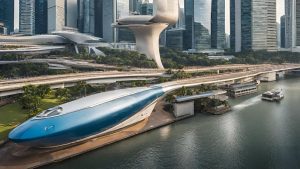Material requirement planning or MRP can deliver many benefits to any manufacturing business. It is essential to have an effective MRP process in place for any manufacturing business if you like to maintain your materials supply and production process smoothly, keeping the costs to the lowest as possible.
What is MRP Material Requirements Planning?

MRP is the planning and controlling system to effectively calculate the materials and components required for the manufacturing of a product. In Material Requirement Planning, inventory, production, and scheduling are taking into account. Merely the primary goal of MRP is to keep the inventory levels to the least, yet high enough to provide the customer demand and to plan out the activities related to material sourcing including, purchasing, delivering, manufacturing.
Master Data for MRP
In Material Requirement Planning, master data plays a huge role. In simple words, master data are data related to all the essential business objects that are customer order independent. Master data can lay the foundation for effective Material Requirement Planning. Typically master data includes details of customers, production, purchase, transport orders, bill of materials, etc. Some of the important master data in MRP are,
- Identification data
- Classification data
- Design data
- Planning data
- Demand data
- Inventory data
- Distribution data
- Procurement data
- Manufacturing data
A robust master data management in place can make all the difference in the world in your Material Requirement Planning system. Today there are many tools available in the market that help you manage master data with more efficiency and lesser effort.
Parts and product structures
For a product to be manufactured, just having raw materials is not enough. There are many other components and parts that are involved in the manufacturing process, such as machinery and their spare parts. The more the manufacturing process gets complicated, the number of parts required to manufacture the product increases. This can make handling master data extremely challenging.
Some of the master data essential for planning parts requirement is
- Part number
- Variant code
- Part name
- Part description
- Part type
- Measuring unit
- Basic material
- Planning type
Product structure
Product structure is used to showcase the parts and raw materials required to make the product. Usually, this is demonstrated in a tree, and it will clearly indicate what part of the raw material is used in what stage, thus giving you a well descriptive idea of the elements and products involved in the manufacturing process.
Product variants
The product variant planning process is commonly used when a manufacturer is making variants of the same product. For example, if the product is a shirt and if it comes in 5 different colours and four different sizes, there are 20 variants of the same product. And in Material Requirement Planning, all the master data of all the components of each variant is calculated separately.
Master Product Planning
Master Production Planning is critical to effective Material Requirement Planning. Without proper product planning, it will be impossible to ensure a smooth production flow. Basically, it defines the groundwork for the manufacturing process of the product helping you with production scheduling, raw material sourcing…etc.
There are four main stages in product planning they are
- Demand forecasting -forecasting the product demand accurately can help ensure the best results with the production planning system.
- Scheduling alternatives -Develop several routes for the production schedule where material availability, equipment functionality is taking into account and the timeframe are established to ensure the fastest and the smoothest production schedule.
- Control – As the production system executes the manufacturing process, you will have to interfere from time to time and keep things under control.
- Evaluation and adjustments– Analyze the schedule to identify areas that lack in efficiency and optimize the scheduling to improve the production speed.
Mainly there are two types of product planning categories
- Anonymous Demand
- Customer Order
Planning for Anonymous demand
When a new product is introducing to the market, where there are no known buyers, the production is planned on anonymous demand. Here mainly, the production plan will be done based on the sales plan and of the expectations.
Customer Orders
When the production is planned for customer orders, it takes a more customer-oriented approach. Here all the products are made to order; thus, the planning solely depends on the customer specifics rather than optimizing or forecasting the standard production process.
Primary and Secondary requirements
Planning primary and secondary requirements are essential in production planning. Here the handling materials and parts required to manufacture the primary product and the other secondary materials are taking into account.
Primary Requirement
The primary requirement includes the end product and other sellable goods such as spare parts and assemblies. The primary requirement considers as the starting point of the MRP process.
Secondary Requirement
All the raw materials, intermediate products, and consumables needed for the production of the primary product are considered as a ‘secondary requirement’. The main target of secondary requirement planning is to calculate the secondary product quantities required accurately. Well-planned secondary requirements can help with inventory and procurement processes helping you save costs and find the best quality materials.
In secondary requirement planning, there are mainly three approaches. They are,
- Consumption driven planning,
- Requirements-driven planning,
- Make-to-order production
Consumption driven planning
Here, planning is done based on past consumption data to forecast future requirements. Consumption driven planning has no reference to the master production plan, and the net requirement triggered only by the rise and fall of the stock levels. One of the main advantages of this approach for planning is that you can do accurate requirement calculations without extensive data. However, in consumption planning, the planning is based on assumptions and estimates rather than actual data.
Requirements-driven planning
Requirement-driven planning gives you more certainty than consumer-driven planning. Here the secondary requirement is calculated based on the Bills Of Materials are used for planning the requirement. Determining secondary requirement is based on bills of materials, also known as “Bills Of Material Exploration”. Here how the parts are related to each other is taken into account rather than taking each part separately.
Make-to-order production
With made-to-order planning, the secondary requirement is calculated every time a customer placed an order. Here the customer specifications for the order are determined first and then calculate the secondary requirement.
Outcome of MRP
Below are some of the top outcomes of MRP or Material Requirement Planning.
- Determine secondary requirements
One of the primary outcomes of Material Requirement Planning is to calculate the secondary requirement based on the primary requirement planning - Planned orders
Also known as Planned Manufacturing, planned orders are another outcome of MRP, which is to determine the requirement of production lots required for an individual period of time or several periods of time. - Purchase orders
Purchased orders can also be determined with an effective MRP process for the requirement of the secondary requirement for an individual or several periods of time.
If you are a manufacturer, having an MRP process in your organization can help you tremendously whether you are a startup, SME or a large organization. It will ensure a smooth production process helping you improve customer satisfaction while saving you costs and delivering you many other benefits.






